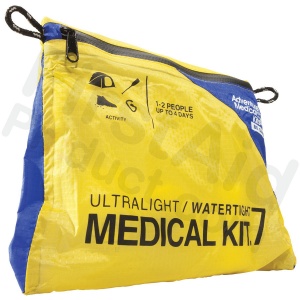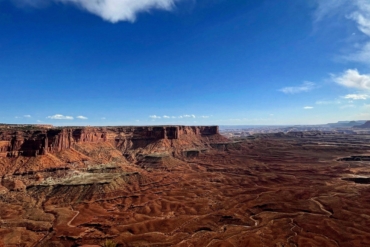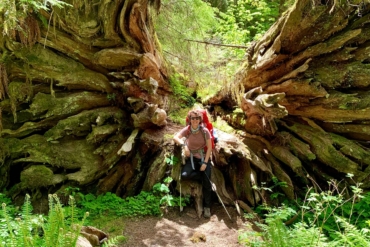Injuries occur when you least expect them in the backcountry. Be prepared with a minimal first-aid kit.
A first-aid kit is the last piece of equipment you want to use. But when injury strikes, it’s one you really want to have.
 There is no shortage of first-aid kits on the market today. We’ve reviewed a handful of them ourselves. Prepackaged medical kits can be purchased to accommodate the lone hiker or fortify your group on the trail.
There is no shortage of first-aid kits on the market today. We’ve reviewed a handful of them ourselves. Prepackaged medical kits can be purchased to accommodate the lone hiker or fortify your group on the trail.
But these kits likely have more than you need, and individual items can be purchased à la carte for a fraction of the price. Tailor them to your specific outing for a dialed kit.
We caught up with ER doctor and adventure racer Jason Quinn to see what he puts in his backcountry kit. If it works for him, it will likely work for you.
DIY First-Aid Kit: What to Bring
GearJunkie: You’re required to bring a first-aid kit on an adventure race, right?
Dr. Quinn: Pretty much all adventure races have a first-aid kit requirement, and U.S. races are usually more strict than international races. I’ve done races in the U.S. that require a snake bite extractor kit, which, as an ER doc, is a joke (more likely to do harm than good).
The most standard kit required by the Adventure Racing World Series (ARWS) is pretty basic, but it keeps you moving with minor injuries. The kit list includes:
- 1 elastic bandage (think ACE wrap)
- 1 triangle bandage
- 1 4″ x 4″ gauze bandage
- 1 roll of adhesive tape
- 4 doses of antihistamine
That’s not much!
No, it’s not. And I don’t think anyone in the racing world – or any outdoor adventurer, for that matter – should limit themselves to this kit alone.
In addition to these items, I like to bring:
- Pain meds. Plain ibuprofen is great, but something stronger can make a big difference when someone is hurt and needs to get out under their own power. I like to carry Tylenol [acetaminophen] with codeine or ibuprofen with codeine (if you can get it – sold over the counter in Australia).
- Electrolytes. Hot temperatures and high humidity can force you to sweat out your minerals, causing cramps or heat-related illnesses. Electrolytes replenish these minerals and can help you finish what you start.
- Anti-diarrheal like Imodium. While a course of Cipro [ciprofloxacin] might kill a pernicious stomach bug that can shut out your month-long trek in Peru, bacteria won’t likely manifest on shorter trips. Best to cement the gut until you can take care of things at home.
- Anti-heartburn like Tums.
- Anti-nausea. I like ondansetron; it doesn’t cause the drowsiness like most antiemetics.
- Water purification. Water is the source of life. You can’t go long without it. I’ll bring lightweight tablets by MSR – they are smaller and taste better than iodine. I never take a filter.
- Extra tape. Extra tape for blisters, bandages, or even gear repair.
- Lubrication. For all body parts that chafe. Vaseline is probably fine and I’ve used lots of Neosporin, but it burns like hell on exposed wounds.
- Sunblock.
- Mosquito repellant. Though I don’t carry it anymore, just motivates me to go faster.
- EpiPen. Anyone with an identified anaphylactic response should carry one. This can be a life-or-death matter.
- Shelter. An emergency blanket or bag can make a dangerous night out in the open merely a miserable, sleepless night.
Anything else you can’t live without?
There’s tons of fancier stuff you can bring, but I haven’t found any of it very useful. For racing, I get everything to fit in a medium-to-small aLoksak bag. A Ziploc bag can work in a pinch, but it will eventually leak. I keep the small stuff handy – creams, purification, some of the meds.
My take on a first-aid kit is to manage the minor stuff that can prevent you from finishing but isn’t life threatening or truly a trip-killer.
Major injuries aren’t ever going to be adequately managed in the backcountry and require an extraction of sorts. For these incidents, you really want to keep the patient warm, hydrated, and prevent them from bleeding out.
On family trips, I’ll sometimes take superglue or a proper tissue adhesive (and occasionally a suture kit) for lacerations that aren’t trip-ending but really should be closed ASAP.
If you’re worried about infectious exposure, bring a CPR mask and nitrile gloves.
Thanks, Jason!
Final Word
And of course, because knowledge weighs nothing, we at GearJunkie recommend getting trained up in wilderness medicine if you spend much time in remote locations.








